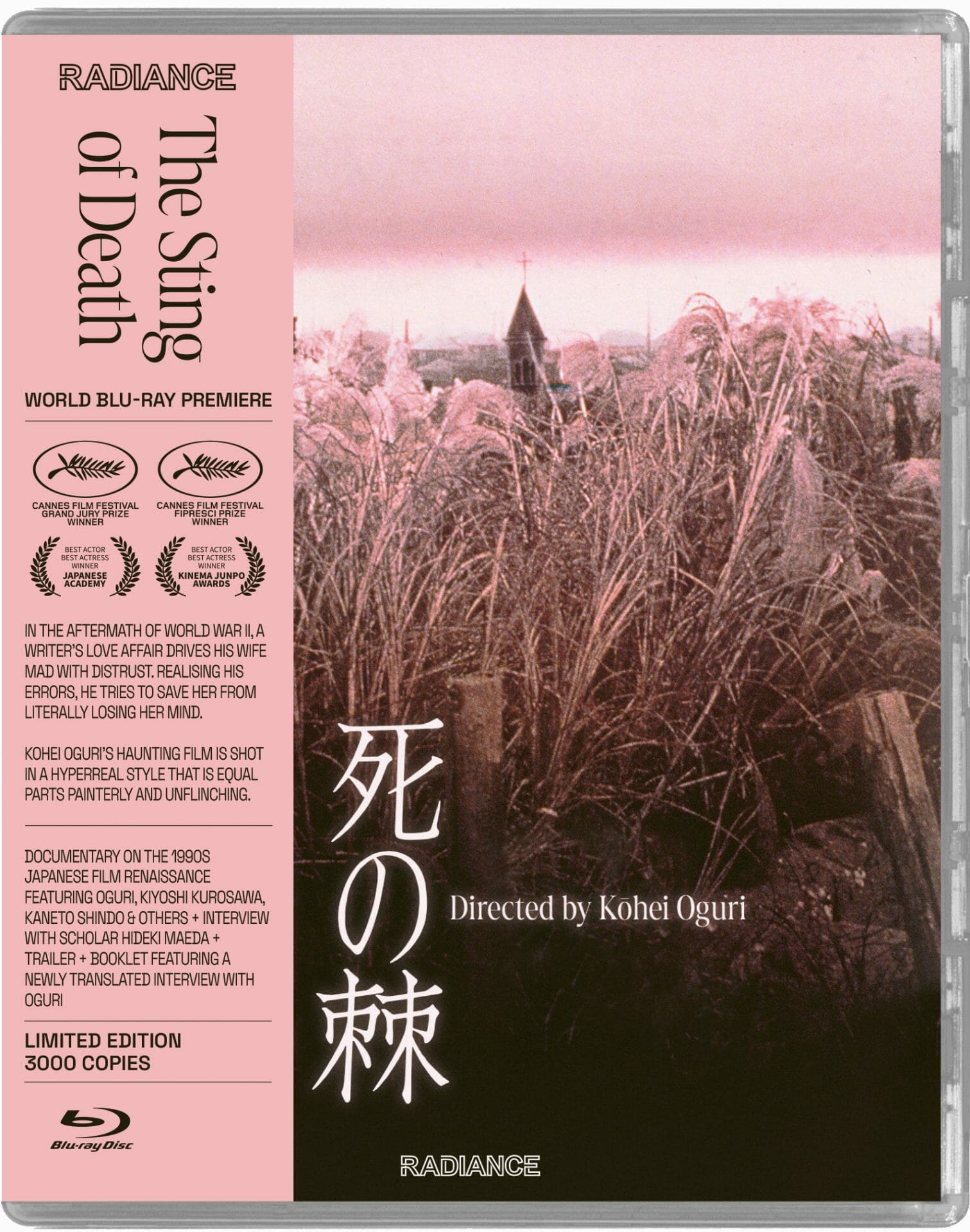The setting is post-war Japan. We follow Miho and Toshio, a husband and wife, and their children as they struggle with the vagaries of their marriage. Miho becomes jealous of an infidelity on the part of her husband which sends her spiraling into fits of madness and paranoia. Is it too late to salvage what is possible irrevocably damaged? Is there any hope for the future or only a long road of despair and insanity?
Director Kôhei Oguri (Muddy River, The Buried Forest), based on the interview included in the physical booklet with this release, has seemingly built his whole career in defiance of the slick, urban, frenzied films of the Japanese New Wave of the ’60s and ’70s. Oguri is a man from the countryside and reflects a more grounded and realistic approach to filmmaking. He seems to strive for an emotional truthfulness in how his characters interact with one another through subtle framing and blocking as well as through using a muted, muddy color palette as if the image itself were as drained of feeling and life as the characters themselves. The Sting of Death is a devastating film with the emotional isolation of Igmar Bergman coupled with the studied and carefully disciplined mis-en-scene of Yasujiro Ozu. It is the intensity of the two central performances that sell the whole premise. Some may find this approach punishing. It certainly can be. This is not a comedy. This is a frank and complex character study of the dissolution of a marriage. The moments of quiet are as unsettling, if not more so, than when the characters’ feelings bubble over and explode in a frenzy. The sparely used but perfectly timed score, primarily comprised of discordant plucking of strings, is a perfect distillation of the inner turmoil and unraveling that Miho faces. The Sting of Death is a sustained exercise in unease, but there are those out there who will find its emotional dynamism rewarding.
The image quality of this release is a bit hard to judge from an objective standpoint. Oguri intentionally uses a very hazy, naturalistic look and feel to ground the film in a kind banal reality of domesticated discord. On such a basis, the transfer represents the dreary look of the film well, and I didn’t notice any distortion of the image or compression artifacts that would detract from the intent. The uncompressed mono track is similarly intentionally subdued but captures the quiet-loud aesthetic of the film well. Radiance has included some very nice extras here. The highlight for me is the feature length French-produced documentary on Japanese cinema in the late ’80s/early ’90s, including interviews with director Oguri as well as contemporaries such as Kiyoshi Kurosawa and Takashi Miike. The disc also includes a specially-produced 20-minute interview by Radiance for this release with film scholar Hideki Maeda who is very knowledgeable of the films of Oguri and gives lots of good info on the director and his films, including The Sting of Death. Also as already mentioned, the disc includes a physical booklet featuring an interview with Oguri in which he discusses his career and his approach to filmmaking. Overall, a very nice, meaningful group of extras.
The Sting of Death is not a film for everyone. It’s the film equivalent of prodding a raw nerve to see how much it will hurt. But if you have an appreciation for the emotionally complex, grounded films of Bergman like Scenes from a Marriage and Cries and Whispers, I think you will find The Sting of Death an enriching experience.

